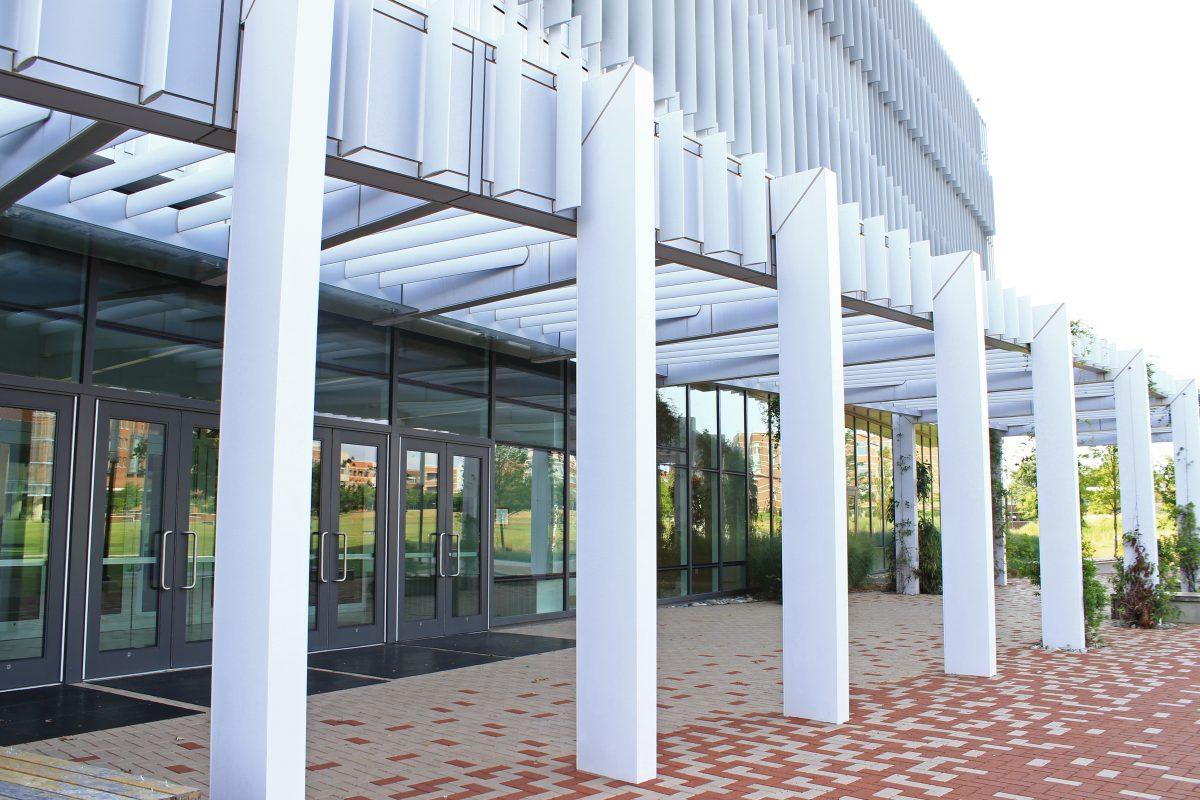Over the past several years, technologies such as virtual reality and augmented reality, also referred to as VR and AR, have become more versatile as we find new uses for them.
“ARt: Augmented Reality in 3D” is an exhibit currently on display in Hunt Library that utilizes AR alongside Snapchat to create displays of digital models. Many of the models on display were created in the class ADN 423: Digital Modeling, taught by Emil Polyak, an assistant professor of art and design at NC State. Other models were contributed by Markus Wust, a digital research and scholarship librarian at D.H. Hill Library, as well as Polyak himself.
“This is a fairly new thing,” Polyak said. “This is the first course where we’ve tried to push it into AR, so the students were very excited about it, because you’re not only able to see your models in your own environment, but it also has its own kind of magic.”
Each model in the exhibit is accessible via a small image on each display, referred to as a Snapcode. When the image is detected by the Snapchat app, the corresponding model then becomes viewable by the user within the app.
Alison Blaine, a data and visualization librarian at D.H. Hill Library, came up with the idea for the project in the fall and helped set up the exhibit that now stands in Hunt Library.
“The planning [for the exhibit] involved a number of librarians and people here at the library, it involved designing the exhibit, and working with the students to make sure they were able to publish their 3-D models to Snapchat successfully,” Blaine said.
Wust contributed two designs to the exhibit: a Walkman cassette player and a science-fiction inspired spaceship. Though they may appear to be small when viewed through the screen of a phone, each of his designs required multiple hours of work in order to achieve the final result as shown in the exhibit.
“For the spaceship, when I had originally submitted it in class, I had put maybe eight hours into it, and then for the AR exhibit I added another four hours,” Wust said. “For the Walkman, because it was originally part of a larger model, it probably took about 25 hours [in total].”
Despite AR being a new field, individuals such as Blaine see it as a way to provide a new outlet of learning opportunities and experiences for students.
“We’re always looking for ways to give our students experiences in working with emerging technologies,” Blaine said. “The students who participated in the project are great designers and we wanted to give them the experience of working in AR because it’s so important across industries right now, so this is a great way for them to showcase their work in a new medium.”
As with any technology, AR still holds untapped potential, and with each new design and exhibit such as “ARt: Augmented Reality in 3D” serves to push the boundaries further out, a sentiment Polyak emphasized.
“What I hope that the students will get out of this is to don’t design for technology, don’t design for a platform with the limitations of the platform, but to design anyway,” Polyak said. “This is just a piece of technology that exposes your work in a different way, in a different language, and I think these are languages that need to be explored and tested in order to find the breaking points. It feeds back to your work and can inspire you to create other works that can work better with the platform.”
The exhibit will be on display in the Hunt Library Technology Showcase throughout the summer of 2018.













